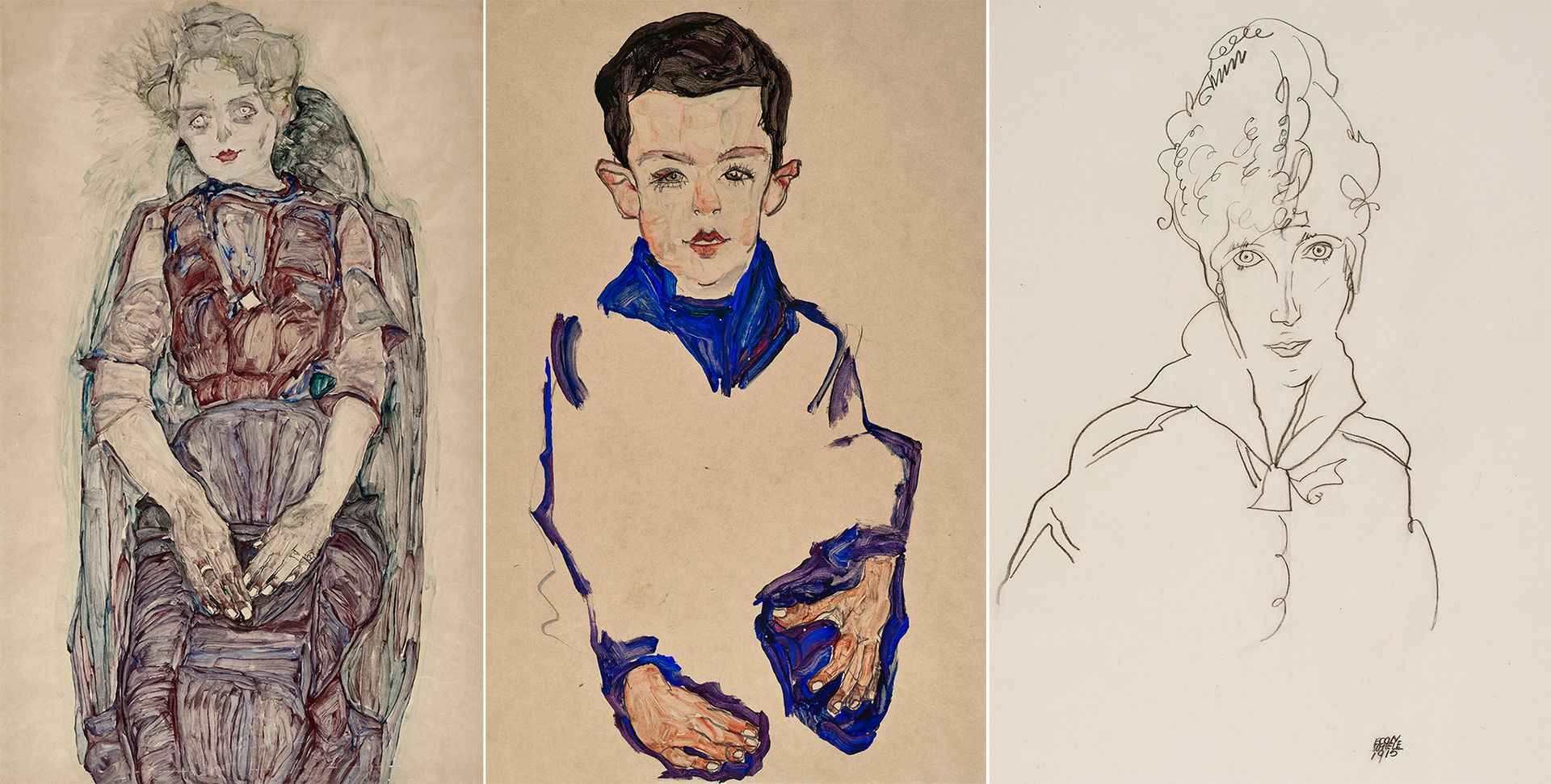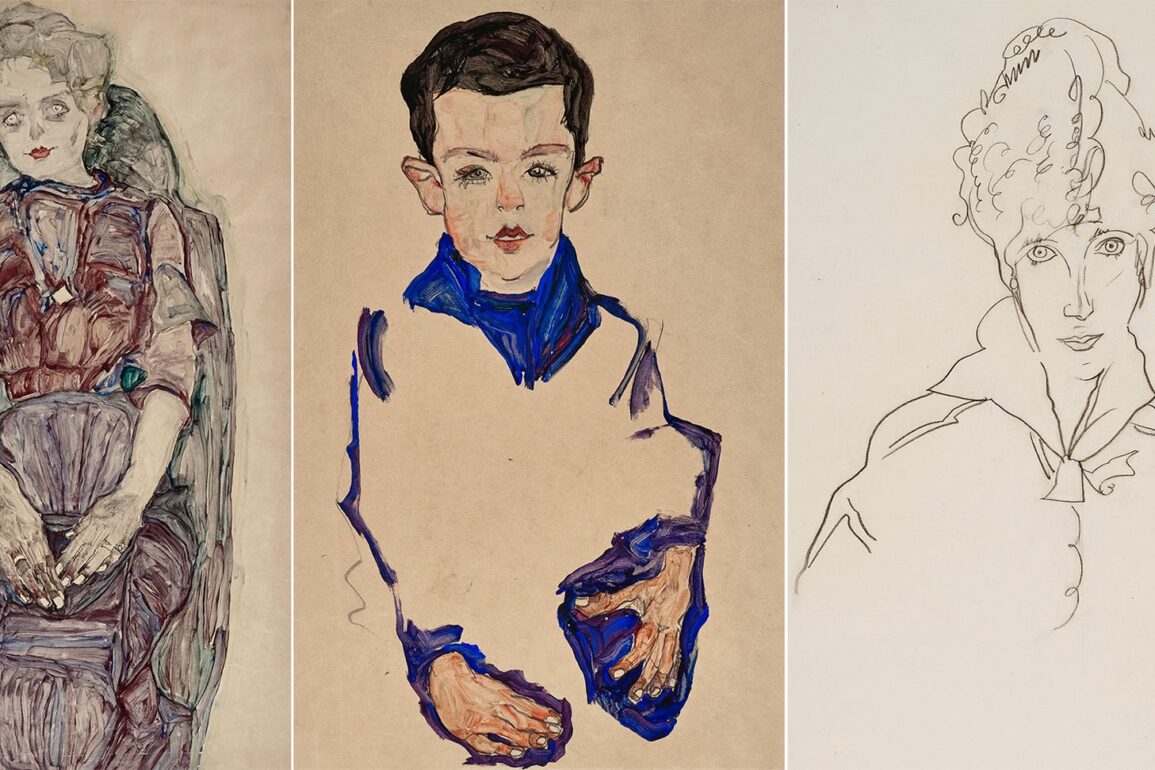A trove of works by Egon Schiele that were recently restituted to the heirs of a Holocaust victim are now headed to auction, with Christie’s planning to sell the six works on paper during its New York sales in November.
The works, which cumulatively have a high estimate of $8.45m, once belonged to the Jewish Austrian cabaret artist Fritz Grünbaum, whose heirs have sought to recover the 81 works by Schiele their ancestor once owned. Grünbaum, a vocal critic of the Nazis prior to the outbreak of the Second World War, was detained at the Dachau concentration camp as early as 1938 when, his heirs say, he was coerced into signing a power-of-attorney document that allowed the Nazis to seize his art collection and sell it. Grünbaum was murdered at Dachau in 1941.
The six works headed to auction next month will be split across two sales, with the three works bearing the highest estimates—Stehende Frau (Dime) (1912, est $1m-2m), Selbstbildnis (1910, est $1m-$2m) and Ich liebe Gegensätze (1912, est $1.5m-$2.5m)—being offered during Christie’s marquee sale of 20th-century art on 9 November. The three other pieces—a two-sided work on paper from 1910 (est $500,000-$800,000), a 1910 portrait of a seated woman ($600,000-$900,000) and a 1915 portrait of the artist’s wife, Edith Schiele (est $150,000-$250,000)—will hit the auction block during a sale of Impressionist and modern works on paper on 11 November.
“This group covers a really nice range of the breadth of Schiele’s oeuvre and career,” says Vanessa Fusco, Christie’s head of evening sale. “It includes formative works from 1910—which is really the year he steps out from the shadow of his mentor, Gustav Klimt—to the very realist 1915 portrait of his wife, Edith.”

Works by Egon Schiele recently restituted to the heirs of Fritz Grünbaum that will be offered at auction by Christie’s in New York on 11 November. From left to right: Sitzende Frau (1910); Knabenbildnis (Herbert Reiner) (recto) and Zwei weibliche Akte mit Draperie (verso) (1910); and Bildnis Edith Schiele (1915) Courtesy Christie’s
The work with the highest estimate, whose title translates to I Love Antithesis, dates from a period in April 1912 when Schiele spent 24 days in prison on obscenity charges. It is one of just four self-portraits he made during his imprisonment and is “incredibly psychologically complex”, Fusco says, with the artist’s emaciated and seemingly bruised face dwarfed by an enormous, billowing red garment rendered in gouache and watercolour. It was previously in the private collection of Ronald Lauder, the philanthropist and founder of the Neue Galerie, a museum in Manhattan devoted to Austrian and German art of the 20th century.
While the works are currently being shown at various Christie’s locations around the world, all six will be on view at the auction house’s Rockefeller Center headquarters in New York beginning 28 October.
A seventh Schiele work that was returned to Grünbaum’s heirs—Timothy Reif, David Fraenkel and Milos Vavra—last month by officials in the Manhattan District Attorney’s Office has been sold privately. The heirs’ lawyer, Raymond Dowd, confirmed that the work in question was Girl Putting on Shoe (1910), which had been in the collection of the Museum of Modern Art. Though he would not disclose the price of the work or the identity of its buyer, Dowd said the new owner is “a prominent philanthropist with a background in Holocaust issues”.
Some of the proceeds from the auction sales of the Grünbaum Schieles are expected to go towards supporting young musicians from underrepresented communities. Last year, when they sold two restituted works by Schiele for a total of just over $3m (including fees), also at Christie’s in New York, Fraenkel and Reif put their share of the proceeds towards creating the Grünbaum Fischer Foundation, whose first award went to a jazz pianist in their final year at the Duke Ellington School of the Arts in Washington, DC.
Since last month’s restitution ceremony in New York, two more museums have voluntarily returned Schiele works to the Grünbaum heirs: the Carnegie Museum of Art in Pittsburgh has given up its claim to the 1917 drawing Portrait of a Man, the Pittsburgh Tribune-Review reported yesterday, and the Allen Memorial Art Museum at Oberlin College in Ohio will hand over Girl with Black Hair (1911), according to Artnews.
This post was originally published on this site be sure to check out more of their content.







